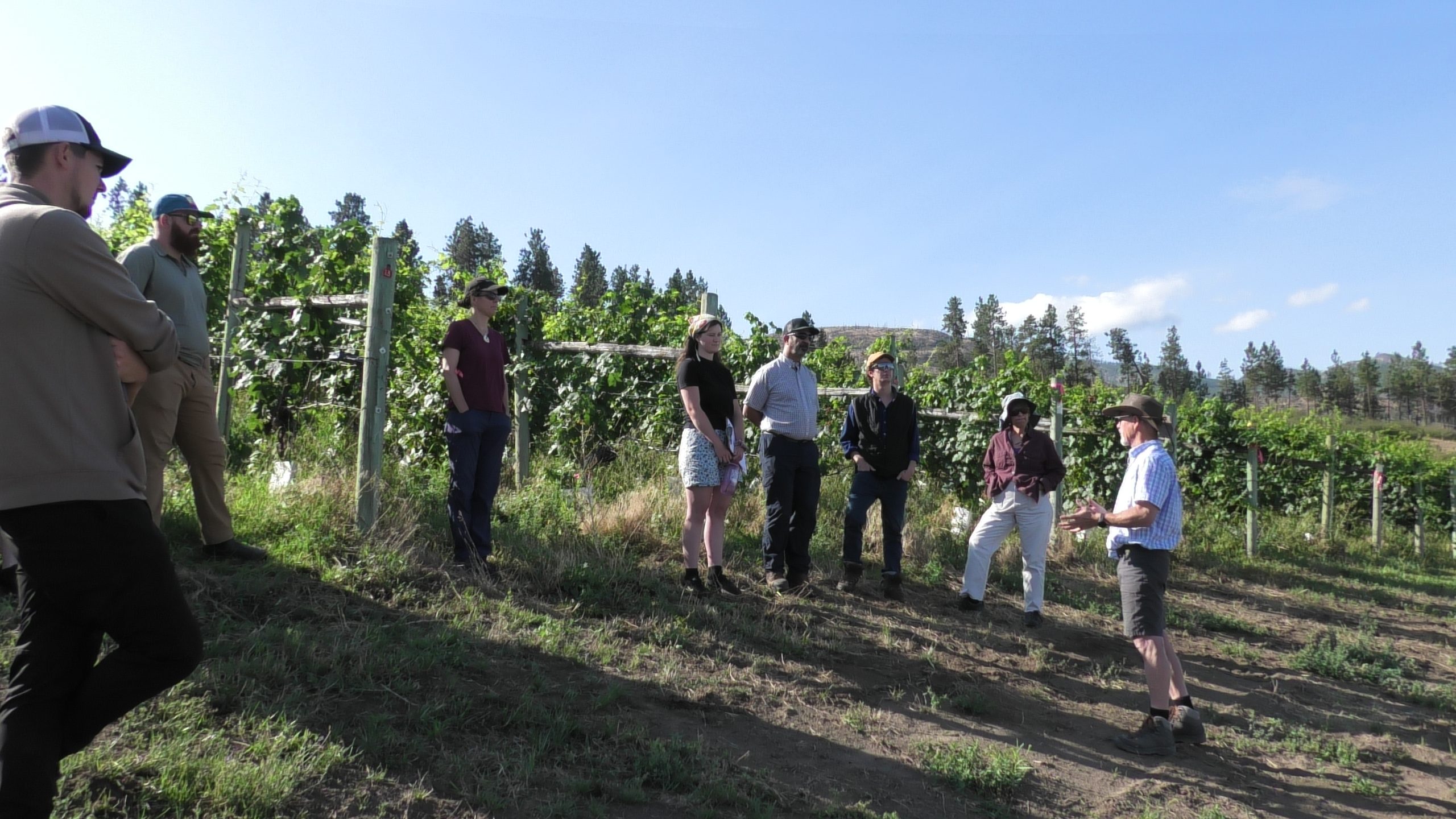Cover Cropping in Okanagan Vineyards
Field Day Recap | August 2024
From Kelowna to Osoyoos, growers and researchers in the BC Living Lab are testing a big question: How to grow cover crops that help mitigate climate change and support vineyard production? Over two summer field days, Dr. Mehdi Sharifi and his team at AAFC Summerland shared what’s working, what isn’t, and what to consider for inter-row cover cropping in wine grapes.
Know Where You Stand, Know Where You Want to Go
A group of growers, industry folks, and researchers discussed how cover cropping in alleyways promises a lot of useful benefits – like suppressing weeds, regulating temperature, providing nitrogen, and reducing soil compaction and erosion. But in practice, it’s difficult to know which mix, seeding approach, or mowing regime will yield results, especially given seed costs and risks from variable weather.
Dr. Sharifi offered key considerations to help plan for the best chances of crop establishment:
- Success of a cover crop variety is highly site-specific. Consider the soil, climate, irrigation, and management of your site more than the promises of a specific variety. For example, crimson clover had great reviews, but when trialed needed more watering than the vines.
- Choose your goal(s) for the cover crop. Grasses are more resilient to drought, while legumes provide nitrogen that may offset fertilizer inputs. Some varieties produce more biomass, which could generate soil organic matter or help suppress weeds.

In-Field Insights
Varieties differed across the Okanagan valley vineyards on tour, but growers were trialing a common starting point – a mix that includes a grass, a legume, and (often) a ‘nurse crop’. A fast-growing nurse crop like tillage radish or oats helps the perennials establish by shielding seedlings, helping them grow upright, and suppressing weeds before its mowed midsummer. The result is a continuously covered alleyway with longer-lasting soil organic matter, that can enhance resilience.

Growing Pains, Getting Established
- Establishing cover crops in untilled ground is tough — pre-existing weeds and grasses often form thick sod or outcompete seedlings, so surface cultivation is often needed.
- Equipment can require customization — in some cases the best tool, a no-till seeder, sunk into cultivated soil and planted seeds too deep for consistent germination.
- Balancing irrigation takes trial and error— cover crops generally need more frequent water than vines (can be up to twice weekly). Success can depend on if the irrigation system supplies the alleyway with enough water.
What’s Up Next?
The BC Living Lab’s collaborative approach emphasizes the value of trialing, observing, and adapting practices to fit each farm’s goals and conditions. While working with growers to trial feasibility on active farms, researchers are continuing to assess how cover crops contribute to storing carbon in the soil and reducing greenhouse gas emissions. Investigating drought-tolerant species, interactions between temperature and moisture, and developing a cover crop selection tool are ongoing priorities.
This field day took place on the traditional and unceded territory of the Sylix people.








